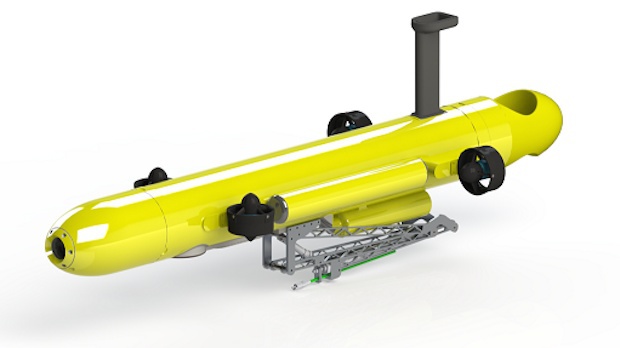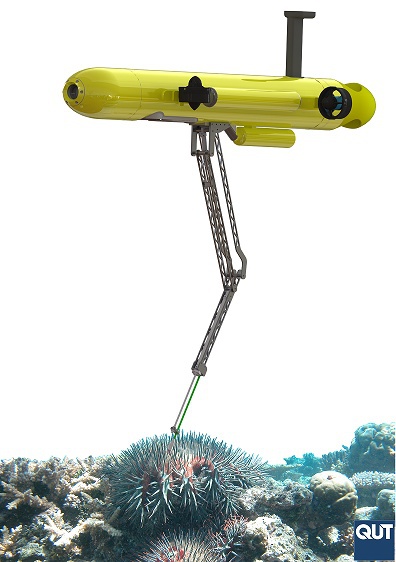Oceanologists have adapted a robot to destroy starfish

Scientists-oceanologists called for help to rescue coral reefs robotics. Reefs are threatened by periodically growing starfish populations called Crown of Thorns (Acanthaster planci). On a square kilometer of reefs, their number can reach 100,000. To limit the population, scientists are trying to use an automatic underwater robot that finds stars and injects a deadly poison to them.
Starfish "The Crown of Thorns" is extremely actively breeding - one star can produce up to 50 million eggs. At the same time, newborn babies almost immediately become poisonous. Those fish that eat these stars do not cope with this - especially since the person actively catches them. These stars feed on coral polyps, twisting their stomachs and covering them with a coral area equal to the area of its body. One star can eat up to 13 m 2 of coral per year.
')

Scientists have long noticed that the outbreak of these stars leads to the death of corals. In the 60s, because of them, corals completely died in large areas on the islands of Guam and Fiji. Outbreaks of fertility are associated with heavy rains on the coasts, which wash large amounts of nutrients into the ocean.
These stars are prickly and poisonous, and also very tenacious - to kill a star, it must be almost completely destroyed. Scientists have tried to deal with them by injecting formalin, but such injections need to be made 10 for each individual to achieve the effect, which greatly slows down the process. One diver can handle only 120 stars per hour.

Last year, it was thought to use a more effective substance that kills these stars - thiosulfate-citrate-bile salts-sucrose agar, TCBS agar . One of his injection leads to the death of a star within 24 hours. A diver would be more effective with this substance - but the robot will do better anyway.
Above the robot COTSBot (Crown-Of-Thorns Starfish robot) Australian engineers from Queensland University of Technology have been working for the past ten years. This torpedo-shaped 30-kilogram apparatus, which can reach speeds of up to 2 meters per second and work autonomously for up to 6 hours. It is equipped with five screws that allow it to move and hang still.

It works fully automatically - the pattern recognition system helps him to find the starfish, aim and inject poison. One robot will not be able to do all the work - but a small flotilla of such robots is capable of clearing the reef sufficiently so that divers complete the work on thinning the starfish population.
Source: https://habr.com/ru/post/368165/
All Articles